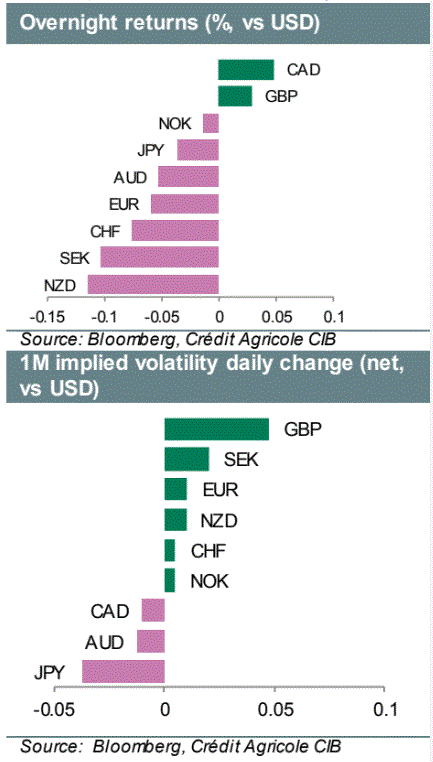Credit Agricole is refusing to budge on commodity currency carry-trades like the AUD. I disagree. China credit clamps have killed reflation and a Fed policy error is cremating it. There never was a commodity super-cycle. Just a very brief inventory super-cycle that is going to come apart H2 and 2022.
Is the FXcarry trade dead or are the reports exaggerated?
Recent client meetings have highlighted that investors have once again changed their view. Indeed, for most of Q221 the investors expected a continuation of the global relation trade-on the back of weak USD, rallying commodity prices and growing inflation expectations. In turn, this was expected to fuel central bank policy divergence and thus fuel demand for carry trades. The G10 commodity currencies have further benefited from the hawkish rhetoric of the irrespective central banks, emerged as higher-yielding currencies and reaped the benefits from the FX investors’ returning demand for carry trades.
The hawkish Fed pivot at its June policy meeting seemingly upended the FX carry trade narrative–it hurt risk sentiment, sent the USD stronger, weighed on a number of commodity prices and dragged down inflation expectations. Recent client views seem to reflect the latest developments with many investors having cut their longs in the commodity and carry currencies and several investors even having turned outright bearish. Their concerns center on the fact that the likes of the BoC, RBNZ and the Norger Bank will not live up to the already hawkish market expectations. Moreover, with major central banks around the world starting to turn less dovish while the official fiscal stimulus and the economic recovery are expected to moderate, some are calling for the end of the commodity super-cycle and thus for a renewed correction lower in the G10 commodity currencies.
The above being said, we are not yet ready to throw in the towel on FX carry trades. Indeed, we note that all of the G10high-yielding currencies have largely kept their relative rate advantage vs the low-yielding currencies and even the USD in recent days. In turn, this reflects the fact their respective central banks have maintained their relatively hawkish rhetoric. Moreover, global energy prices remain very supported while industrial metal prices have stabilized following their recent downside correction. All this continues to bode well for the high-yielding currencies of the G10 commodity exporters especially if the Fed remains very cautious in removing accommodation. Last but not least, our positioning analysis suggests that investors were adding to their AUD shorts while cutting their CAD longs. In all, with many negatives in the price of the G10 carry currencies, we expect a period of consolidation in coming weeks.


